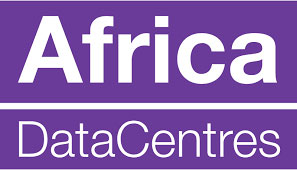Data centres are an essential component of today’s digitised world. They may be a small segment of the IT sector, but they’re among the highest consumers of electric power.
In fact, studies have shown that data centre energy consumption continues to rise annually which is why, for many data centres, the focus is now on sustainability and leaving a greener footprint.
“If you look at the energy consumption of data centres, they’re one of the most energy-intensive consumers – they’re heavy electricity users in a relatively small square metre footprint,” says Dr Angus Hay, Group Executive: IT and Partners at Africa Data Centres.
“This is why data centres are looking at ways of becoming more sustainable in terms of carbon emissions.”
Dr Hay explains that with new technology, the focus is on energy and how it can be sustainable. In South Africa, for example, the primary source of energy is from fossil fuel, which is now being driven down by the welcome news from the ministry of energy, of more renewable energy being delivered to the grid.
Data centres still use coal for power. Fossil fuel is classified as a non-renewable energy source because it takes millions of years to form.
“In Africa, there are a lot of data centres popping up. But in most African countries reliable energy supply is scarce and is scarce of energy. We have to depend on fossil fuel as a resource,” says Dr Hay. “When you talk of driving down a data centre’s carbon footprint, you first need to talk about energy efficiency. How can you drive down the overuse of energy from whatever source of power you’re using?”
While there is a lot of talk about carbon neutrality and getting to net zero in the data centre sector, Dr Hay sees this as step two.
“First, you need to start with energy efficiency – making sure that your data centre is efficient – and then, it’s about procuring your energy from renewable sources like solar wind, hydrogen and hydro,” he adds.
In the Western Cape, Sere Wind Farm is one of the largest wind-farms in Southern Africa with a production capacity of 100MW - it is also Eskom’s first utility scale renewable energy project.
While wind is a growing sector, most of Africa’s renewable energy comes from solar.
“But you cannot have solar when the sun is not shining. Now, you have to introduce other technologies such as batteries and renewable energy credits – something we’re pushing for in Africa,” says Dr Hay.
On the African continent, different countries have different policies when it comes to renewable energy, which can make it harder for data centres to achieve their sustainability goals. “Policy is the biggest step but in most countries, this is starting to change.
Every year, there is more technology coming into the data centre space to drive efficiency. From cooling to IT resources and sensors, a lot has changed. A few years ago, many data centres didn’t have containment.
“When you have containment, you're limiting wastage in terms of cooling – you’re only cooling the places that require cooling and that is where your servers are,” he says.
Internet of things (IOT) sensor technology is also now being used in data centres to measure and control temperature, humidity and power. “It means that your system can self-adjust without human interaction. You no longer have to wait for an alarm to pop up to change your controls – like cooling. The whole system is being driven by the artificial intelligence.”
Cooling a data centre can be as energy intensive as running it which is why many European data centres opt to build data centres in colder, climate-friendly environments.
While ‘free cooling’ works in Scandinavian countries like Norway, Africa is hot. “Bringing air from outside will actually be negative,” says Dr Hay. “However, in places like Cape Town, where winters get very cold, you can utilise free cooling.
For any data centre looking to make sustainability a part of their strategy, there is a lot to take into consideration – it truly is a balancing act: “It’s not only net zero energy or zero carbon, focus has to also be in achieving net zero waste and net zero water,” Dr Hay adds.
“Ultimately, energy efficiency and renewables work hand-in-hand. The first step should be procuring energy efficient equipment in your data centre and having the most energy efficient data centre design, thereby reducing the amount of renewable energy required in your data centre.”
Share
